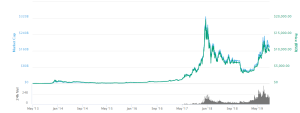Understanding Bitcoin Halvings and Their Impact
Bitcoin halving 2024 is almost here! Discover how this crucial event impacts Bitcoin’s price and scarcity. Learn about past halvings and predict the future of BTC. Don\’t miss out!
The Bitcoin halving is a significant event in the cryptocurrency world, occurring approximately every four years. This event reduces the rate at which new Bitcoins are created, effectively halving the block reward miners receive for validating transactions. This mechanism, built into the Bitcoin protocol, is designed to control inflation and maintain the scarcity of Bitcoin. Understanding this process and its historical impact is crucial for anyone interested in Bitcoin’s long-term prospects.
Understanding the Bitcoin Halving Mechanism
At its core, the Bitcoin halving is a programmed reduction in the reward given to Bitcoin miners for successfully adding new blocks of transactions to the blockchain. Initially, the reward was 50 Bitcoins per block. After the first halving, it dropped to 25, then to 12.5, and the next halving will reduce it to 6.25. This predictable reduction is a key component of Bitcoin’s deflationary monetary policy, intended to mimic the scarcity of precious metals like gold.
Historical Impact of Bitcoin Halvings
Past halvings have been closely followed by periods of significant price appreciation. While correlation doesn’t equal causation, the reduced supply of new Bitcoins entering the market often leads to increased demand, pushing prices higher. However, it’s important to remember that various other factors, including macroeconomic conditions, regulatory changes, and market sentiment, also play a role in Bitcoin’s price movements. The impact of each halving has been different, influenced by the prevailing market conditions at the time.
- First Halving (2012): The price of Bitcoin saw a gradual increase following the first halving, reflecting a growing awareness and adoption of the cryptocurrency.
- Second Halving (2016): This halving was followed by a substantial price surge, although the market experienced volatility in the preceding and following periods.
- Third Halving (2020): The impact of this halving was notable, with the Bitcoin price experiencing a significant rally, reaching all-time highs shortly afterward. The market, however, experienced a correction following this rally.
Predicting the Future: The Upcoming Halving
Predicting the precise impact of the next Bitcoin halving is impossible. Numerous factors influence Bitcoin’s price, and the cryptocurrency market is inherently volatile; However, by analyzing historical trends and considering current market dynamics, we can develop some informed hypotheses. The reduced supply, coupled with growing institutional adoption and increasing global interest in digital assets, might contribute to upward price pressure. Conversely, macroeconomic headwinds or regulatory uncertainty could offset these positive influences.
Factors Influencing Post-Halving Price
The price movement after a halving is rarely straightforward. Several interconnected variables contribute to the outcome. These include the overall state of the global economy, the regulatory environment for cryptocurrencies, the level of institutional investment in Bitcoin, and, significantly, the prevailing sentiment within the cryptocurrency community. A period of increased uncertainty prior to the halving can influence the price reaction afterward. A positive outlook tends to fuel price appreciation, whereas negative sentiment can lead to price drops.
Furthermore, the technological advancements in the Bitcoin ecosystem also play a significant role. Improvements in scalability, transaction speeds, and security can all enhance Bitcoin’s appeal and potentially drive price increases. Conversely, any major security breaches or technological setbacks could negatively influence market sentiment and suppress price growth. The strength of the network, reflected in the hash rate and mining difficulty, also plays an important role in its resilience and overall security.
The Role of Miner Behavior
Miners are pivotal to the Bitcoin ecosystem. They secure the network by validating transactions and adding new blocks to the blockchain. The halving directly impacts their profitability, as the reward for each block is reduced. This can lead to a variety of responses. Some miners might choose to shut down their operations if the reduced reward is no longer profitable, leading to a potential decrease in the network’s hash rate. Others might adapt by improving their efficiency or switching to more profitable mining operations, depending on the prevailing market conditions. The overall network hash rate is a critical indicator of security and can influence price stability.
Beyond the Price: Long-Term Implications
While the price impact of the halving is often the primary focus, it’s crucial to consider the broader implications. The halving contributes to Bitcoin’s long-term scarcity, reinforcing its position as a potential store of value. This scarcity is a key differentiator from fiat currencies, which are subject to inflationary pressures. The halving is not just a short-term event; it is an integral part of the Bitcoin design, contributing to its fundamentally deflationary nature.
The halving event also focuses attention on the underlying technology and the philosophy behind Bitcoin. It serves as a reminder of its decentralized nature and its potential as an alternative financial system. This renewed focus can attract new users and developers, further strengthening the Bitcoin network and ecosystem. The potential for increased adoption is closely tied to the perception of its long-term value and stability; This perception is shaped by factors beyond the halving, but the halving contributes to the overall narrative of scarcity and long-term value.
The Importance of Diversification
Investing in cryptocurrencies, including Bitcoin, carries inherent risks. The market is highly volatile, and prices can fluctuate significantly. Therefore, diversification is crucial for any investor. Don’t put all your eggs in one basket. Spread your investments across different asset classes to mitigate risk. Thorough research and understanding of the risks involved are essential before investing in any cryptocurrency. Remember that past performance is not indicative of future results.
- Consult with a financial advisor before making any investment decisions.
- Only invest what you can afford to lose.
- Stay informed about market trends and news.
The Bitcoin halving is a complex event with far-reaching consequences. While the price impact is a significant aspect, it’s essential to consider the broader implications for the Bitcoin network and the cryptocurrency market as a whole. The halving is a programmed event designed to control inflation and maintain the scarcity of Bitcoin. This event has historically been followed by periods of price appreciation, but various other factors influence the final outcome. Understanding these factors, both historical and contemporary, is vital for navigating the complexities of the cryptocurrency market.
The countdown to the next halving generates considerable excitement and speculation. However, rational analysis, coupled with an understanding of the inherent risks, is crucial for making informed decisions. The future of Bitcoin remains uncertain, but the halving mechanism is a significant part of its long-term design, aimed at maintaining its scarcity and potential as a store of value. The interplay between market forces, technological advancements, and regulatory changes will ultimately determine the long-term impact of this pivotal event. Investors should approach the halving with a cautious yet informed perspective, recognizing both the potential rewards and the inherent risks.
Furthermore, the narrative surrounding the halving often overshadows other important aspects of the Bitcoin ecosystem. The ongoing development of the Lightning Network, for example, is crucial for improving Bitcoin’s scalability and transaction speed. This development, independent of the halving, significantly impacts Bitcoin’s potential for mass adoption. It is important to consider the holistic ecosystem and not solely focus on the price fluctuations driven by the halving cycle.







